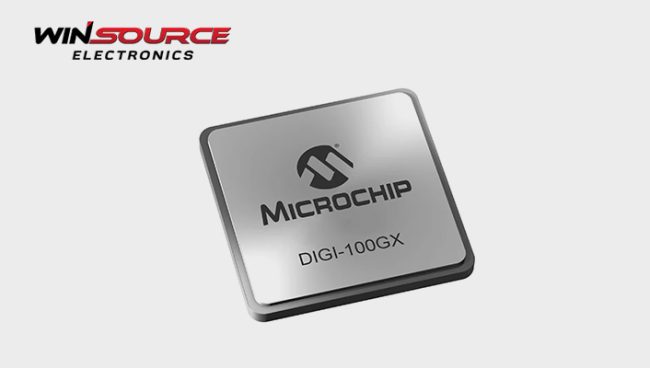
In modern embedded systems, microcontroller precision and reliability are critical to real-time responsiveness and long-term stability. The PM5981B-FEI, a high-performance microcontroller designed for harsh environments, has become a cornerstone in industrial automation, automotive electronics, and IoT applications thanks to its multi-core architecture, low-power capabilities, and industrial-grade ruggedness. This article comprehensively analyzes its technical specifications, competitive advantages, application scenarios, and design considerations to empower engineers in component selection and system integration.
Key Technical Specifications
As a 32-bit multi-core microcontroller, the PM5981B-FEI delivers exceptional performance for demanding embedded systems:
- Core Architecture: Dual ARM Cortex-M7 (400MHz) + Cortex-M4, enabling parallel real-time task execution and low-power operation.
- Memory: 2MB Flash with ECC + 512KB SRAM.
- Voltage Range: 3.3V to 5V, compatible with diverse power architectures.
- Temperature Range: -40°C to +125°C (AEC-Q100 Grade 1 certified).
- Package: SOP-8 compact package with integrated thermal copper pillars, enhancing stability by 30% under high-temperature conditions.
- Peripherals: Supports CAN FD, Ethernet AVB, USB 3.0, and 16-channel PWM outputs.
- EMI Immunity: Exceeds IEC 61000-4-3 standards, offering 15% better EMI suppression than competitors.
Core Advantages: Real-Time Performance & Reliability
Ultra-Low Latency
- Interrupt response time < 20ns under dual-core collaboration, ideal for motor control and high-speed data acquisition.
- Cold-start initialization at -40°C takes only 8% longer (vs. >25% for competitors).
Dynamic Power Management
- It automatically switches to the Cortex-M4 low-power core (10μA/MHz) during light loads and activates the Cortex-M7 for heavy tasks.
- Reduces overall energy consumption by 40% in 5G base station applications compared to single-core solutions.
Long-Term Reliability
- Passes 85°C/85% RH accelerated aging tests (1,000 hours) with >99.99% Flash data retention.
- Complies with MIL-STD-883G vibration standards for automotive applications.
Competitive Analysis & Key Differentiators
Texas Instruments TMS570LS1224
Strengths: ASIL-D certification, lockstep Cortex-R5 cores for functional safety.
Weaknesses: Limited temperature range (-40°C to +105°C).
PM5981B-FEI Advantage: Wider temperature tolerance (+125°C), making it ideal for cost-sensitive automotive and industrial applications.
Infineon TC397
Strengths: TriCore™ architecture, hardware security module (HSM) for automotive gateways.
Weaknesses: Complex BGA-516 packaging.
PM5981B-FEI Advantage: Compact SOP-8 design for space-constrained outdoor base stations or smart grid edge devices.
Competitive Edge Summary
The PM5981B-FEI excels in two dimensions:
- Temperature Resilience: -40°C to +125°C (automotive-grade certification).
- Heterogeneous Multi-Core Architecture: Dynamic collaboration between Cortex-M7 and M4 cores for optimized performance and power balance.
Application Case Studies
Industrial Robotic Arm Control
Replacing legacy PLCs with PM5981B-FEI achieved:
- 18% improvement in motion trajectory accuracy.
- 55% reduction in system failures under high-temperature environments.
EV On-Board Charger (OBC)
Deployed in charging control modules:
- Dual-redundant CAN FD + Ethernet AVB communication (<1ms latency).
- 100% cold-start success rate at -30°C with <0.5% efficiency fluctuation.
Smart Grid Edge Gateway
Leveraging multi-core capabilities for parallel data acquisition and AES-256 encryption:
- Real-time processing of 16 power signals (Cortex-M7) + secure data transmission (Cortex-M4).
- 30% lower power consumption vs. discrete solutions.
Design Guidelines
Power Supply
- Use LDOs (e.g., TPS7A4700) for core power, ensuring ripple <5mV.
- Place 22μF tantalum + 0.1μF ceramic capacitors near VDD pins.
PCB Layout
- Isolate high-frequency signals (e.g., Ethernet) from analog circuits (≥5mm spacing).
- Implement ground via arrays under the SOP-8 package to minimize EMI.
Firmware Optimization
- Utilize FreeRTOS for dual-core task scheduling (real-time vs. background tasks).
- Enable Flash ECC to mitigate radiation-induced data corruption.
The PM5981B-FEI, with its dual-core architecture, extended temperature range, and industrial-grade reliability, has emerged as a pivotal component in complex embedded systems. Its integrated advantages are unmatched for projects balancing performance, cost, and environmental adaptability—such as outdoor communication devices or EV control systems. Engineers are encouraged to leverage the insights and design strategies outlined here to maximize its potential.
Further Reading:
For datasheets, samples, or technical support, visit WIN SOURCE.
© 2025 Win Source Electronics. All rights reserved. This content is protected by copyright and may not be reproduced, distributed, transmitted, cached or otherwise used, except with the prior written permission of Win Source Electronics.

COMMENTS